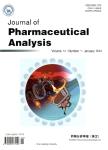Clinical manifestations and cerebral angiographic findings of moyamoya disease
Clinical manifestations and cerebral angiographic findings of moyamoya disease作者机构:Department of Neurology First Affiliated Hospital Medical School of Xi'an Jiaotong University Xi'an 710061 China Department of Neurology Hospital of Chinese Traditional Medicine of Baoji Baoji 721000 China
出 版 物:《Journal of Pharmaceutical Analysis》 (药物分析学报(英文版))
年 卷 期:2010年第22卷第2期
页 面:131-134页
学科分类:1002[医学-临床医学] 100204[医学-神经病学] 10[医学]
主 题:moyamoya disease digital subtraction angiography clinical characteristic
摘 要:Objective To study the clinical features and angiographic findings of moyamoya disease (MMD) as well as their relationship. Methods A total of 22 MMD patients received routine digital substraction angiography (DSA). The clinical manifestations and angiographic findings were analyzed. Results Clinical manifestations varied and each patient often had multiple symptoms,including cerebral infarction in 9 patients with an average age of 23.6 (13-39 years) and cerebral hemorrhage in 7 patients with an average age of 31.2 (28-46 years). Angiographic examination found that all the diseased sides showed MMD blood vessels. The patients who received encephalo-myo-arterio-synangiosis (EMAS) had better prognosis than those without receiving the treatment. Conclusion Cerebral infarction is frequent in children and adolescents with MMD,whereas cerebral hemorrhage is common in adults. DSA is a golden criterion for diagnosing MMD. Surgical treatment,EMAS blood supply reconstruction in particular,should be prescribed.



